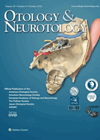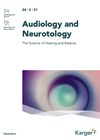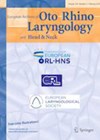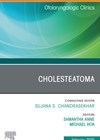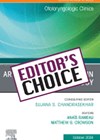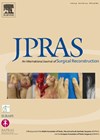
Journal Reviews
Not to be mis-underestimated
It is a very rare occurrence to find a paper looking at NF2 and the auditory system. There seems to only be a couple on NF2 prevalence in the population, so this is unsurprising. As far as I can recall...
Cochlear implant and age
In an American ageing society with more prevalent hearing loss, fewer geriatric patients are opting for cochlear implants (CI). This is mainly due to comorbidities and potential complications. Authors conducted a retrospective review of CI patients from 2015 till 2021....
Association of tinnitus with dementia
In this large case-controlled study, the authors have compared the presence of tinnitus prior to the diagnosis of dementia in the study group with those without dementia. Dementia patients were selected from the National Health Insurance group. The control group...
Current AI audiology knowledge
Artificial intelligence (AI) tools are becoming increasingly popular and can be utilised by patients, healthcare professionals and students. The performance of chatbots can be variable between different AIs and, indeed, different topics. There is no current consensus for the best...
Audiological outcomes after CI in patients with inner ear schwannomas
In the last decade, several case series and case reports describing hearing rehabilitation with cochlear implants (CI) in patients with inner ear schwannomas (IES) have been published. This systematic review and meta-analysis studied audiological outcomes from 110 patients (111 ears)...
Update on cholesteatoma
Surgery for cholesteatoma should be tailored to individual patients, considering patient and disease factors, to obtain a dry, safe and functional ear. In this article, the authors discuss the current definitions and classification system of middle ear cholesteatoma, as well...
AI in ENT practice
Artificial intelligence (AI) technologies are becoming increasingly prevalent in our lives and there has been both enthusiasm and caution for using AI in healthcare. A recent article in the Journal of the American Medical Association reported on a trial examining...
Audiometric and Quality of Life comparison between Bonebridge® and Osia®
Bone conduction implants are an alternative to hearing aids for varying reasons. Both Bonebridge® and Osia® are transcutaneous devices maintaining intact skin, establishing a connection between the implanted device and external processor through a magnetic system. Both are described as...
Endoscopic approach to the internal auditory canal (IAC)
The otoendoscope, with its wide-angle visualisation, has made it an increasingly popular tool to perform outer, middle and even inner ear surgery. Approaches to the IAC with the endoscope have been described by several authors. In this paper, Valente et...
Tubomanometry in eustachian tube dysfunction
This prospective study evaluated the validity and reliability of tubomanometry (TMM) in 25 patients with sinus disease, 75 patients with middle ear disease and 25 healthy volunteers. After thorough clinical examination, the participants were evaluated with TMM, nasal endoscope, otoendoscope,...
Tinnitus without hearing loss – inflammation?
Inflammation can have a profound impact on multiple systems. Certainly in recent years, autoimmune conditions are on the rise and the impact on audiovestibular symptoms have been documented. Given the rates in the population, the impact of inflammation on the...
Should we leave a reconstructed auricle exposed?
Microtia results in psychological and functional morbidity and total auricle reconstruction offers the affected individual a more cosmetically pleasing ear. The art of dressing postoperatively can be heterogenous between surgeons. This single-centre retrospective study based in China compared complication rate...


